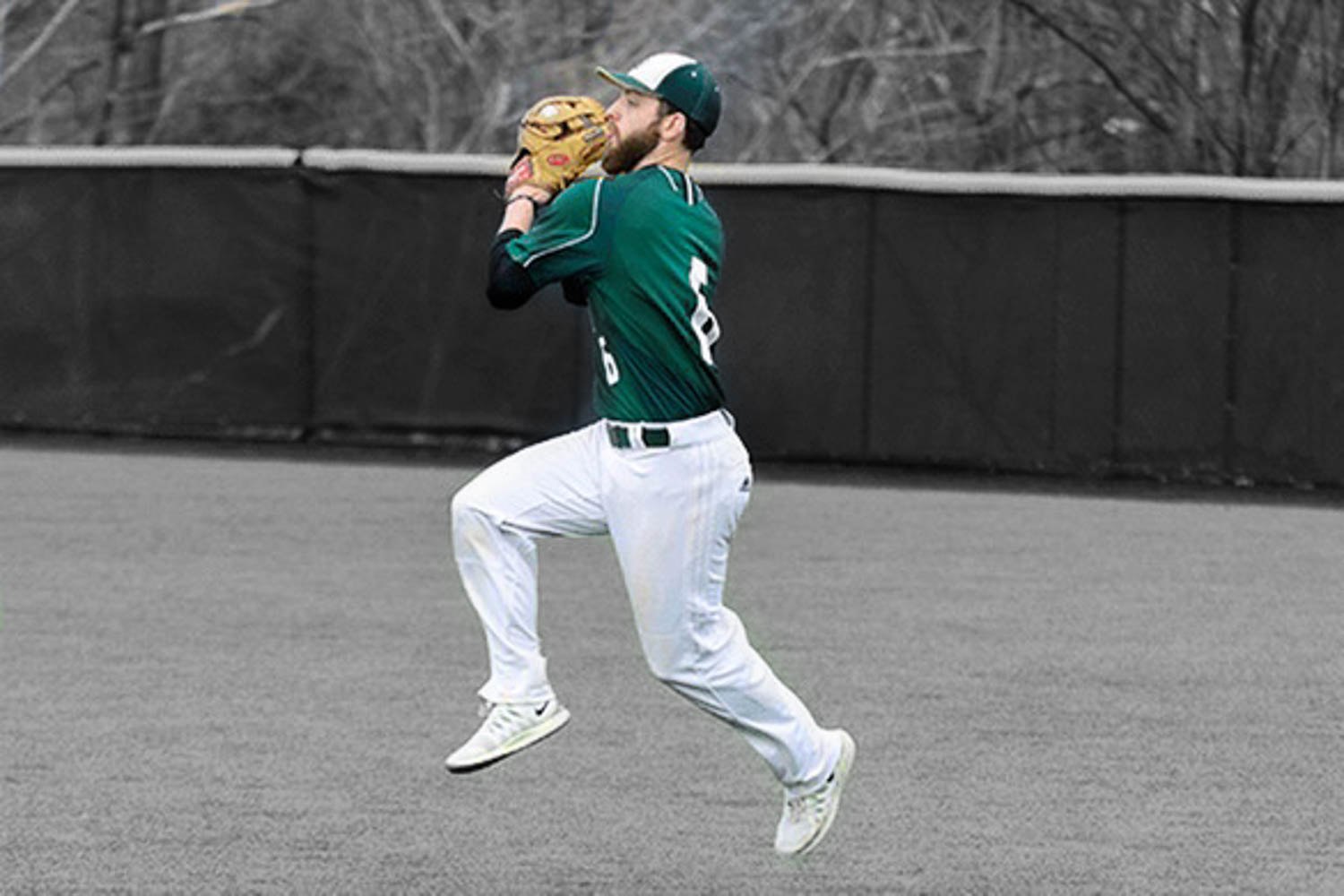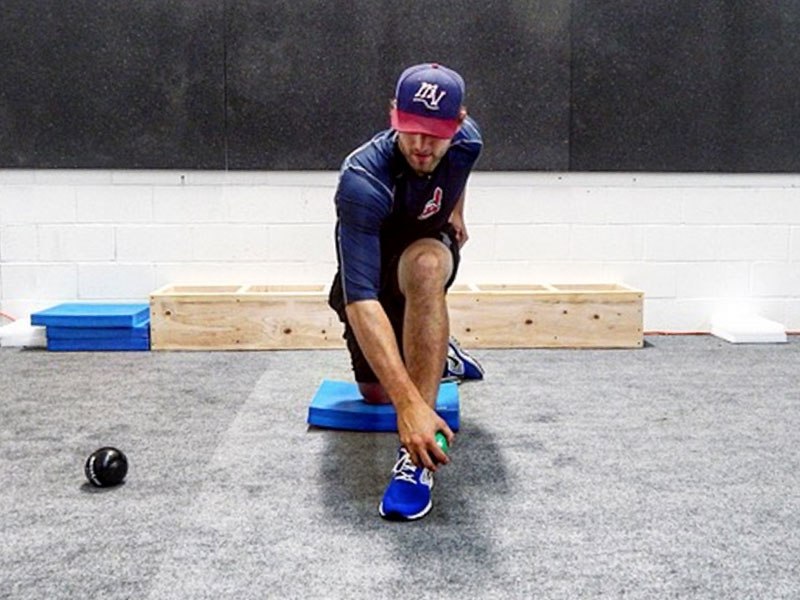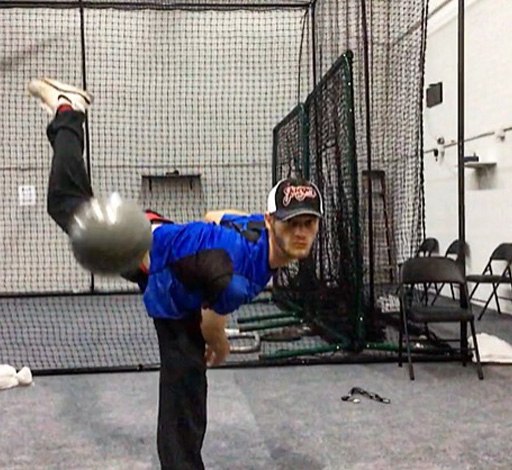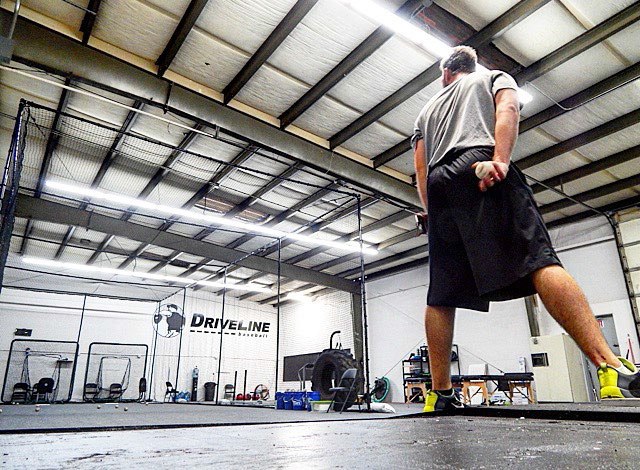Crow-Hop Weighted Baseball Throws for Velocity Development

One of the bigger staples of our velocity development program are maximum intent throws to a net using weighted baseballs. This is something we prominently feature on our social media accounts and it gets a ton of attention!
When we uploaded this video of Casey Weathers throwing 103 MPH (later eclipsed it by touching 105.9 MPH) and Christian Meister throwing in the mid-90’s, we got a ton of interesting comments – some good, some bad!
A comment that invariably comes up when a video like this gets popular enough is:
How hard does he throw from the set position on the rubber? I bet this stuff doesn’t transfer.
In Casey’s situation, you can read two articles on his first go-around here at Driveline as well as the second time training here after being released by the Tampa Bay Rays, which will give you plenty of information on the topic. Christian Meister was also drafted in the 29th round in 2015 despite not playing for a college team (literally drafted out of a 2,000 sq ft facility in Puyallup, WA – we’ve since moved to bigger and better things).
As it pertains to this video, however:
- Casey: 95-97 all year (touched 100), reached AA Akron (Indians) and posted a career low walk rate (bb%) as well as career low FIP (3.36)
- Christian: 89-92 all year (touched 94), reached short-season A-ball (Indians) and posted a 0.98 ERA in rookie ball AZL
The second negative comment is always:
Yeah but these guys are just spraying it and don’t focus on throwing strikes!
Again, Casey posted a career low walk rate and Christian also walked a low amount of batters in the AZL, so this type of training didn’t make their command worse. We have a command-specific protocol that athletes go through here as well, but that’s a topic for another day.
How does maximum intent throwing improve velocity?
The million dollar question that people seem to be hellbent on refuting is that this type of throwing training doesn’t transfer to the mound. I’ll break down why this type of stuff transfers and how it gets integrated to mound pitching in a clear and concise path, and to do so requires understanding four blocks of training as performed at Driveline Baseball.
Block One: Arm Strength / Mechanical Patterning

The first phase of training at Driveline Baseball involves training the pitching arm ballistically using overload Plyo Ball ® to develop proprioception (feel) and mechanical patterning in the athlete. By using a series of constraint drills, moving from most constrained to least constrained, and varying the weight of the implement thrown, the athlete not only builds speed-strength of the pitching arm but a better grasp of how to organize the body correctly and consistently to deliver maximum velocity to the target.
Most of this is not done at maximum rate of perceived exertion (RPE) but it sets the stage for the crow-hop / maximum intent throwing protocol.
Block Two: Improving Range of Motion

High intent ballistic throwing creates increased dynamic range of motion (ROM) at the shoulder joint. By using overload implements, a greater stretch is realized, which is vital in both amateur athletes and professionals who have suffered an arm injury in the past and have significantly reduced ROM in the glenohumeral joint. Elite pitchers have much higher external rotation ROM in the shoulder than mediocre pitchers (source: ASMI), and by using high intensity throwing training methods, dynamic ER ROM is built.
Overload weighted baseballs help gently stretch the shoulder into increased range of motion while simultaneously building force generation capacity at those ranges of motion – this is a critical point that is often overlooked. It does no good to have “useless” range of motion in any joint if strength and capacity cannot be adequately expressed from those positions; it is this reason why throwing overloaded weighted baseballs are great for this purpose, requiring more force to launch from the end range of motion than is usually expected, thus giving the athlete a training effect.
Block Three: Improving Rate of Force Development

Rate of force development (ROFD) is simply the rate at which you can produce force – the faster, the better. By using underload weighted baseballs, an athlete gets the training effect of improving speed-strength on the rapid fire end of the spectrum. The pitcher gets the stimulus of throwing a 3 or 4 oz. baseball much faster than he would throw a regulation weight 5 oz. baseball and not only consciously learns how to develop intent, but subconsciously improves ROFD capacity in both the underlying musculature as well as the central nervous system (CNS).
Block Four: Reorganizing Proprioception for the Mound
Now that general arm fitness has improved, range of motion has increased, and rate of force development has gone through the roof, it’s all about transferring it to a more specific preparatory exercise chain, which is ultimately the mound. Pitchers generally tend to see better command and pitching velocity even just going through our training program before entering the flat ground / mound pitching series, but it’s important to backchain this improved fitness and awareness to the rubber. A closer look at the training cycle that backchains throwing velocity into pitching velocity can be found in an earlier blog post: How to Transfer Weighted Baseball Velocity Gains to the Mound.
A big misconception is that doing maximum intensity throwing leads to worse command, which has been spread due to some academies and training facilities not caring about where the ball goes and insisting that high intensity training alone will yield command benefits; while our data shows that command DOES tend to get better after a ballistic training program that heavily features recovery modalities (not all focus on this last part), the variance is quite large.
Since 2014 however, our research on differential training has yielded very good applicable protocols to improve mound-based command. While the methods ended up being divergent, the underlying concepts were the same as the velocity training – by going from most constrained to least constrained scenarios and varying not only the weight of the implement (baseball) but also the rate of perceived exertion (RPE) and command targeting situations, the athlete had a clear and actionable plan to improve fastball command on the mound. While these protocols are not yet fully developed and public, we expect to finish the training program in early 2016 using a combination of neural research with EEG sensors (Emotiv EPOC+) combination with visual research with virtual reality headsets (Oculus Rift) to truly grasp what the pitcher feels and sees.
While the videos and posts look like a bunch of guys slinging weighted balls with zero abandon, realize that there’s a heck of a lot more going on under the surface – at least at Driveline Baseball, anyway!
Comment section
Add a Comment
You must be logged in to post a comment.

Drew -
This is why I came here after several “high end” places. There’s no one that truly understands what’s going on in both the mind and body of a flame throwing jabroni.
David -
If I had to recommend one of your posts to a pitcher-parent, it has to be this one, Kyle. Excellent.
Rick Collins -
I have been involved in the study and implementation of throwing and pitching for almost 20 years. I get incredible results from the athletes I train. I never promote any other trainers. However, I will say that what Driveline Baseball is doing seems to be the only program even close to what I have developed during my time of R&D and training athletes. I would strongly recommend this program. No program is perfect. But this is certainly one of the only ones I have seen that can come even remotely close to what I would recommend. If you are a player looking to gain velocity and accuracy, this program will definitely help. One of the biggest lies people by into is the idea that high intensity throwing causes you to lose accuracy. That thought shows a lack of understanding of athletic performance. Learning to be efficient will yield accuracy. However, trying to be accurate will not yield increases in velocity. Accuracy is a result of efficient movement patterns. So are increases in velocity. My own studies have revealed that focusing on developing velocity through learning efficient athletic movement patterns will first yield increased velocity and then accuracy. This seems to be an underlying theme with Driveline even though they put it in different words, this is what they are doing. Therefore, training with them will yield significantly positive results.
Demonizing Weighted Balls - A Flawed Approach -
[…] on their fastball or tires in the 7th but wants to stay out there to protect the bullpen, he can rely on training that has prepared him for those movements and execute them with […]
Baseball-Specific Training vs General Workouts: You Need Both, At Different Times - Driveline Baseball -
[…] most closely resembles the act of pitching itself. Throwing, whether with regulation baseballs, over- or under-weight baseballs, or medicine balls are some training methods that closely mimic the pitching motion itself, thus […]